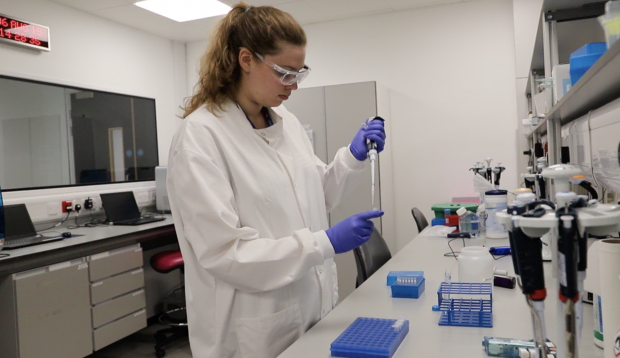The science behind attracting a diverse workforce in to STEM subjects

I have worked in the science industry for over 20 years and for as long as I can remember we have been talking about increasing the numbers of women in Science, Technology, Engineering and Mathematics (STEM).
At school I was one of very few girls taking all the sciences at GCSE and had to fight to take the subjects I wanted. There were two of us in A-level maths and I carried out my PhD research in Bio-Chemical Engineering alongside very few women. Since then I have developed and manufactured medicines in key therapeutic areas such as oncology, chronic pain and respiratory disease.
Increasing the diversity of our workforce
According to the latest WISE statistics there are now over 900,000 women in core STEM occupations, which makes up just 22% of the overall STEM workforce. Although there are more women than ever before entering STEM careers; women only make up 12% of Engineering Professionals and 8% in skilled trades.
It is so important that we increase the diversity of our workforce to increase diversity of thought. To find the best solutions to major challenges facing 100% of today’s global population. We need a diverse cross section of that population represented to develop scientific ideas and drive first-class innovation.
STEM is an incredibly social world of problem solving, working together and being creative and there is no reason why girls can’t do it! If the solution to increasing diversity were easy, we would have achieved equality years ago.
Does it start with stereotyped play at nursery, role models at primary school or secondary school subject options? Could it be the way apprenticeships are advertised or the way university courses are promoted?
It is all of these influences and many, many more.
Gender neutral language in apprenticeships
Data on apprenticeship starts in core STEM occupation shows the percentage of women is shockingly low.
The percentage of Engineering and Manufacturing Technologies apprenticeships completed by females remains steady at only 7%. The proportion of young women completing Construction and the Built Environment apprenticeships remains flat at 2%.
The Institute are looking into how wording can effect apprenticeships as research has shown that the language used in job adverts can make the job more or less appealing to one gender and therefore discourage women from applying for certain jobs.
There are some amazing women in STEM role models working with the Institute, pushing against an open door to increase the diversity of apprenticeship uptake. Trialling gender neutral language in apprenticeship standards and occupational profiles can only help to attract key talent from every background as well as using the unbelievably talented apprentices themselves as advocates and ambassadors for vocational pathways into STEM careers. There are also some worthy organisations advocating best practices for schools and employers to attract and retain women in STEM.
A hugely rewarding career
My career in STEM has been incredibly fulfilling so far. It is hugely rewarding for me to think of the patients’ lives that have been touched by the products I have supported, as well as personally being prescribed the life extending medicines I worked on at the start of my career.
Core STEM skills shortages have recently been estimated by employers to cost UK business £1.5bn per year. Attracting more girls and young women into Advanced and Higher Core STEM apprenticeships is crucial if employers are to effectively meet their skills needs.
Take a look at the Institute’s Twitter and Linkedin to see our latest activities











Responses